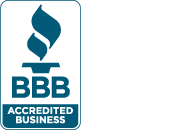When completing the paperwork to create your nonprofit organization, determining your Board of Directors is an essential step. You must allocate time to finding the best people to take on these volunteer roles as they play a vital part in your organization’s success and growth. Board engagement is easier to accomplish when you select qualified members who are passionate about your nonprofit’s mission. They’ll be the best supporters, advocates, donors, and ambassadors. If you’re a new nonprofit start-up or manager, then keep reading to learn what it takes to make your Board successful.
The Top 5 Nonprofit Board Engagement Strategies:
1. Start Strong! Develop your Board engagement strategies early on.
Take a look at your Board members to list their strengths, challenges, skills, and passions. While it might be tempting to start your first Board with friends and family, that may not serve you well in the long run. A strong Board engagement strategy can start with the selection of individuals who are passionate about your cause and represent diverse viewpoints and skill sets. These are individuals who will be loyal to the cause for the long haul.
Also, take a close look at your organization’s needs. Look for people who have backgrounds in nonprofit tax exemption laws, bookkeeping, or payroll who can help you maintain your documentation for IRS reporting and taxes. Board members with experience in insurance, graphic design, and corporate sponsorships can be significant assets in organizing events and securing funding. A robust lineup will help you maintain Board engagement and establish a productive environment that encourages open and honest dialogue.
2. Use Board engagement strategies for meetings and committee work.
Preparing for Board meetings is easier if you are practicing good time and project management skills. To increase nonprofit Board engagement, distribute brief bios of all members so the group can get to know one another. Seasoned Board members are often expert networkers, so they will relish the opportunity to meet others who share their interests. That said, the best Board members are also very busy individuals, so be sure to maximize their time. Structure your meeting agendas around critical issues, questions, or strategic priorities to which they can provide insight. One of the best Board engagement rules to follow is to look at members as “consultants” who are skilled in their field, and then to tap into their willingness to help your organization.
A rewarding way to increase nonprofit Board engagement is to establish different committees. The committees should be based on your nonprofit’s needs and the skills and interests of the members. Popular Board engagement committees include web design committees, fundraising committees, events committees, and grant writing committees, to name a few. Through specific committee work, your Board members will utilize their strengths and feel a sense of reward by helping to advance the organization’s mission.
Be sure to follow your Board engagement strategies when hosting each meeting. Begin with a recap of the last meeting, and allocate time for each committee to present their work. This practice will allow everyone to see the Board’s progress and add relevant suggestions or ideas for future work.

3. Ask for assessments and advice.
Annual self-assessments are an excellent way for Board members to look back on accomplishments and determine what level of Board engagement they’d like to have moving forward. Self-assessments are also a great way to get input about their experiences working with your organization. You want to encourage not only positive feedback, but also feedback on areas that could use improvement. If Board members identify an area of weakness, then ask them for advice on how to remedy it! By listening to what they have to say and then working to address concerns, you’re enhancing your nonprofit Board’s engagement and making members feel heard and valued.
4. Treat Board members the same as you would major donors.
Whether your Board members are making significant financial contributions or offering time volunteering, an essential rule is to treat all of them as a “major donor.” Developing sincere and committed relationships with each one is critical to Board engagement. Offer members opportunities to connect with your organization in a purely social way through special “non-working” events such as luncheons, retreats, or an evening happy hour. Consider annual, end-of-year gifts during the holidays as a thank-you for ongoing contributions to your nonprofit community. When you establish personal connections with your Board, they’ll become your strongest allies.
5. Always mind your manners!
It shouldn’t be surprising that displaying good manners is the most effective way to increase Board engagement. Always ask and confirm with individuals before assigning them tasks, and thank them often and sincerely in person, through emails, and in thank-you letters. Remember, your Board members are an essential component of your organization’s success. All of your Board engagement strategies must reflect that.
Want to Learn More?
If you’re looking for more information on effectively managing your nonprofit, there are numerous online resources that can help you with planning and recruiting your Board, Board engagement, managing daily operations, and creating programs that align with your mission. We’re here to help you succeed in making your nonprofit dreams a reality!



